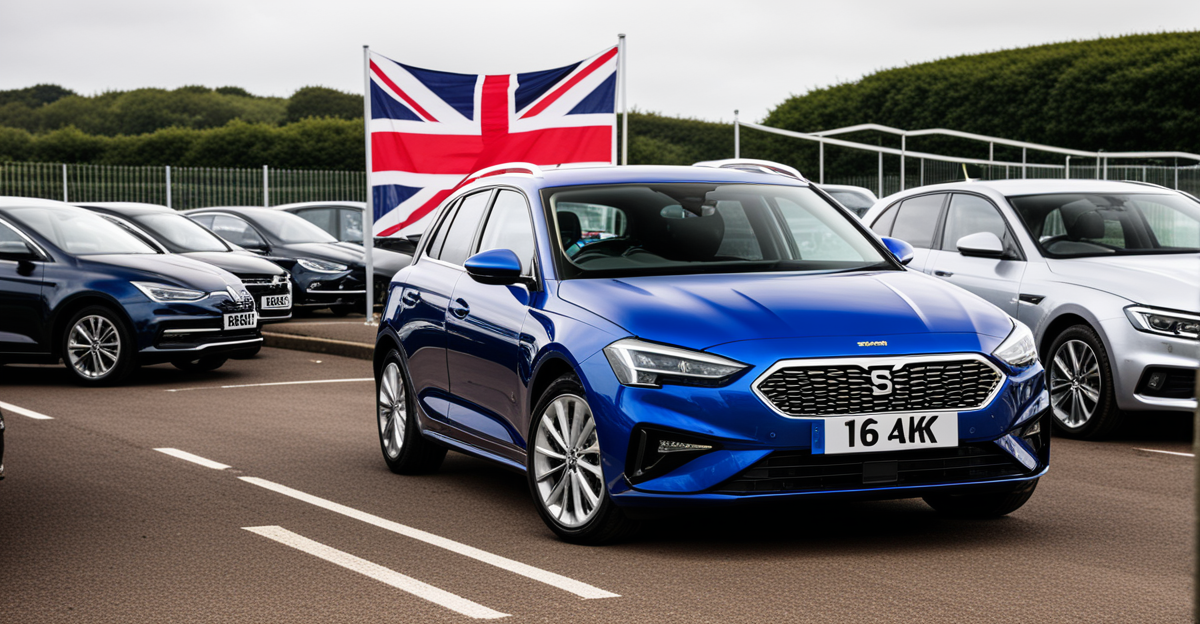Immediate effects of Brexit on UK automotive exports
Since Brexit, the Brexit impact on UK automotive exports has been significant, with observable changes in export volumes starting in 2021. Post-Brexit trade statistics show a decline in exports to the EU, which remains the UK’s primary trading partner in this sector. This drop stems from new customs procedures and increased costs. UK automotive exports contracted sharply in the first two years after Brexit, reflecting disruptions at borders and delays in delivery schedules.
The immediate economic consequences included reduced competitiveness of UK-made vehicles in European markets. Exporters faced longer clearance times, affecting supply chains and resulting in some manufacturers scaling back production or redirecting focus to non-EU countries. Many found their goods subject to additional checks, which increased lead times and lowered profit margins.
Also read : How are UK automakers leveraging digital transformation to enhance operations?
Key trading partners such as Germany, France, and the Netherlands were most affected by shifting trade flows. These countries import large shares of UK automotive parts and completed vehicles. Consequently, the post-Brexit trade statistics indicate a reconfiguration of traditional trade patterns, with UK exports to these markets experiencing uneven recovery. This situation has prompted urgent strategic reviews by exporters to mitigate sustained impacts.
Tariffs, trade barriers, and regulatory changes
Since Brexit, the introduction of Brexit tariffs and UK-EU trade barriers has directly affected the cost structure of UK automotive exports. Tariffs applied to certain automotive components and vehicles increased the overall export expenses, making UK products less price-competitive in the European Union market. This is evident in the post-Brexit trade statistics, which reveal a contraction in UK automotive exports partly attributable to these additional financial burdens.
Additional reading : Driving Innovation: How are UK Automotive Companies Preparing for the Future?
Beyond tariffs, new automotive regulations introduced after Brexit have complicated compliance for UK manufacturers. The divergence between UK and EU regulatory standards necessitates adherence to dual certification processes, adding time and administrative costs. Exporters must now navigate separate rules governing safety, emissions, and technical specifications, which had been previously harmonized under EU membership.
These regulatory changes intertwine with practical challenges. UK manufacturers face logistical hurdles including increased customs checks, paperwork, and border delays, which disrupt supply chains. These obstacles collectively slow down export processes and elevate operational complexity. Such difficulties reinforce the importance of strategic adaptation in the industry to manage rising compliance costs and trade friction.
In sum, the combined effect of tariffs, trade barriers, and evolving regulations forms a critical barrier for UK automotive exporters. Understanding these layers is essential to grasp how the Brexit impact reshapes the industry’s competitiveness and international market access.
Industry response and adaptation strategies
The UK automotive industry adaptation to the Brexit impact has involved significant reconfiguration of supply chains and manufacturing processes. To counteract the disruptions revealed by post-Brexit trade statistics, many companies have diversified their sourcing strategies, moving parts production closer to final assembly plants within the UK or in non-EU countries. This reduces reliance on complex cross-border logistics, which were previously streamlined under EU regulations.
Exporters have developed targeted export strategies post-Brexit designed to maintain market share despite increased costs and regulatory hurdles. For example, some manufacturers have shifted focus to expanding sales in non-EU markets such as the US, Asia, and the Middle East. These efforts are supported by trade missions and government export promotion programs aimed at offsetting reduced access to traditional European markets.
Industry-led initiatives demonstrate proactive measures to manage the complexity of new customs procedures and compliance requirements. Investments in digital customs clearance systems and enhanced supply chain visibility tools help mitigate delays caused by UK-EU trade barriers. In addition, manufacturers collaborate more closely with logistics providers to streamline transport routes and inventory management.
Overall, the UK automotive industry adaptation showcases resilience and innovation in the face of Brexit-related challenges. The strategic responses aim not only to navigate the current post-Brexit environment but to position UK manufacturers competitively in a shifting global market.
Comparative analysis: Pre- and post-Brexit export performance
Examining pre-Brexit vs post-Brexit UK automotive export statistics reveals clear shifts in both export volume and market share. Before Brexit, the UK’s automotive sector enjoyed relatively stable growth with seamless access to EU markets. According to official data, exports to major EU partners accounted for a substantial majority of total UK automotive exports. Post-Brexit trade statistics, however, highlight a marked decline in exports to the EU starting in 2021. This reduction reflects the combined effects of UK-EU trade barriers and new compliance requirements, which raised costs and created uncertainty for exporters.
Foreign direct investment in UK automotive manufacturing also shifted: some international firms postponed or reduced investment following Brexit due to concerns over market access and regulatory divergence. Plant operations experienced disruptions, with certain manufacturers adjusting production levels or relocating components of their supply chains to maintain competitiveness. These operational changes are supported by government and industry data showing fluctuating output levels and export values in recent years.
Utilizing detailed government reports and automotive sector data enables a precise understanding of the Brexit impact on export dynamics. This comprehensive analysis confirms that while the UK’s automotive export industry remains significant globally, the post-Brexit landscape introduces new challenges. Tracking these metrics over time is essential for identifying recovery trends and potential areas for policy intervention.
Tariffs, trade barriers, and regulatory changes
The Brexit tariffs imposed on certain automotive components and vehicles have notably increased the cost of UK automotive exports. These tariffs directly escalate export expenses, thereby reducing price competitiveness within the EU market. This is evident from post-Brexit trade statistics, which reflect a contraction in export volumes partly due to these augmented financial burdens. Even where tariffs do not apply, the presence of UK-EU trade barriers introduces added complexity and indirect costs that burden exporters.
In addition to tariffs, evolving automotive regulations have profoundly affected manufacturers. After Brexit, regulatory standards between the UK and EU have diverged, requiring exporters to comply with distinct certification processes in both jurisdictions. This results in redundant testing and documentation, increasing administrative workloads and delaying market entry. The duplication of compliance for safety, emissions, and technical requirements was previously unnecessary under unified EU rules, highlighting the tangible consequences of Brexit on regulatory alignment.
These regulatory shifts intertwine with logistical challenges such as intensified customs checks and paperwork. UK manufacturers now face longer clearance times at borders, which disrupt supply chains and complicate timely delivery schedules. These UK-EU trade barriers have made export operations more cumbersome and unpredictable, adversely affecting the sector’s efficiency and profits.
In summary, the triple impact of Brexit tariffs, divergent automotive regulations, and heightened UK-EU trade barriers collectively raises costs and operational burdens for UK automotive exporters. Businesses must navigate these layered challenges to remain competitive in international markets, as detailed by recent post-Brexit trade statistics.
Expert insights and official reporting
Industry expert opinions consistently highlight the profound Brexit impact on UK automotive exports, emphasizing challenges such as increased costs and regulatory complexity. Leaders from organizations like the Society of Motor Manufacturers and Traders (SMMT) have stressed that post-Brexit trade statistics reveal not only reduced export volumes but also the need for urgent policy support and industry adaptation. Their commentary often reflects concerns over disrupted supply chains and the burden of complying with divergent standards.
Official reports from government bodies provide detailed analysis, quantifying export declines and shifts in market dynamics since Brexit. These reports underscore the significance of UK-EU trade barriers and Brexit tariffs as critical factors driving changes observed in the sector. They also document evolving regulatory frameworks, highlighting the resultant operational costs and delays for manufacturers. Such findings help frame the economic context within which companies must operate post-Brexit.
Economists and trade analysts contribute perspectives on broader macroeconomic implications, discussing how the Brexit impact reshapes competitiveness and investment decisions in the automotive industry. They analyze data trends to forecast potential recovery scenarios and advise on strategic responses. Collectively, expert insights combined with official reporting form a comprehensive evidence base that informs stakeholders and guides policy formulation aimed at supporting the future of UK automotive exports.







